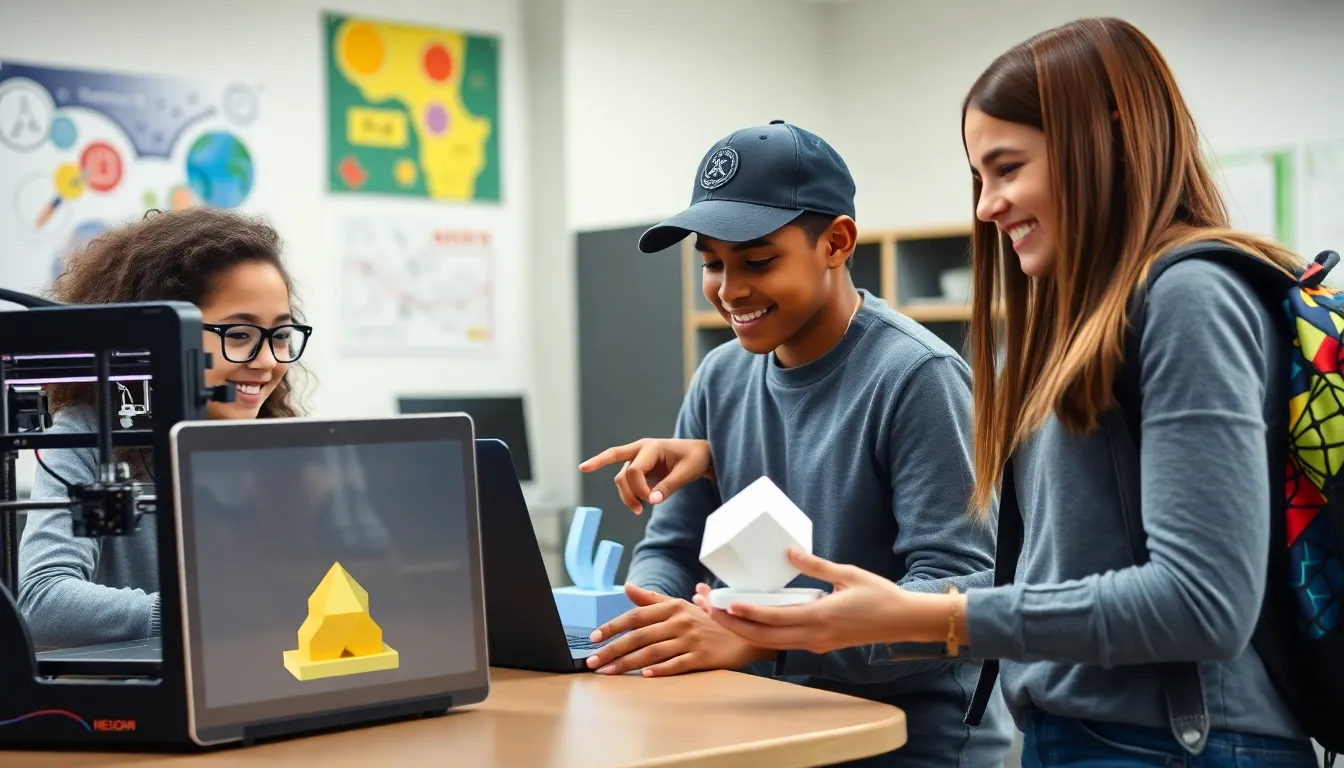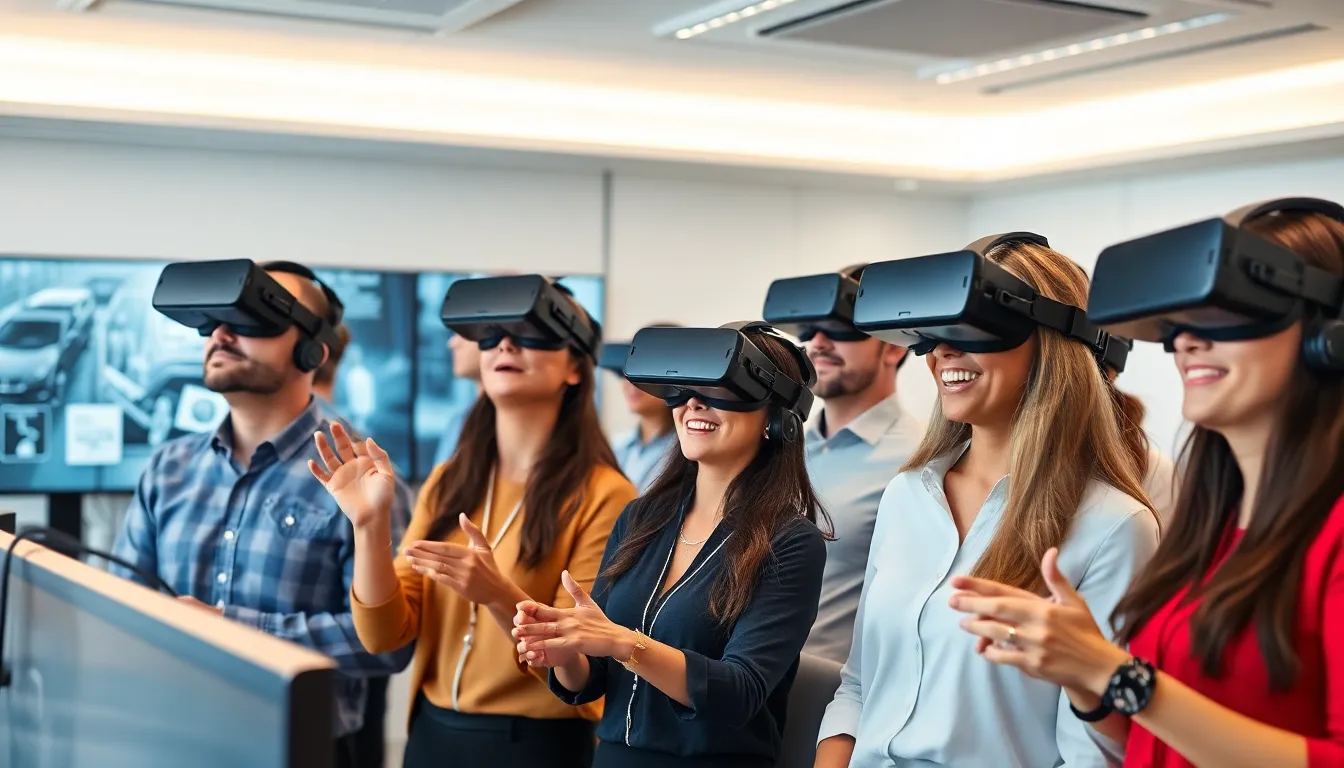Virtual reality has exploded into a realm where imagination meets technology, and VR modeling tools are leading the charge. Imagine crafting entire worlds with just a flick of your wrist—no magic wand required! These tools empower creators to dive into immersive experiences, turning their wildest ideas into stunning visual realities.
Table of Contents
ToggleOverview of VR Modeling Tools
VR modeling tools play a crucial role in the development of immersive virtual environments. These applications enable users to create, edit, and visualize 3D models seamlessly. With various features tailored for storytelling, designers can manipulate elements in real time.
Several popular VR modeling tools include SketchUp, Blender, and Unity. SketchUp offers an intuitive interface, making it accessible for beginners. Blender, known for its comprehensive tools, allows for intricate 3D modeling and animation. Unity excels in game development, providing powerful capabilities for interactive experiences.
When selecting a tool, consider the intended application. Designers working on architectural projects might prefer SketchUp for its ease of use. On the other hand, game developers often opt for Unity due to its extensive resources and community support. Familiarization with specific software can enhance workflow efficiency.
Numerous VR modeling tools incorporate collaboration features, allowing multiple users to work on projects simultaneously. These functionalities cater to teams, facilitating feedback and brainstorming sessions. Real-time collaboration fosters creativity and accelerates project completion.
Integrating VR modeling tools into the creative process unlocks new possibilities. Immersive experiences become more achievable with advanced features such as 3D scanning and physics simulations. As technologies evolve, users can expect even more innovative functionalities to enhance their designs.
Understanding the strengths and applications of various VR modeling tools can significantly impact project outcomes. By leveraging the right tools, creators can breathe life into their visions, crafting remarkable virtual environments.
Key Features of VR Modeling Tools
VR modeling tools offer essential features that enhance user experience and facilitate creativity. These capabilities cater to various needs, making them indispensable for creators.
User Interface Design
User interface design plays a crucial role in the effectiveness of VR modeling tools. Intuitive layouts guide users through the modeling process with ease. Well-organized menus allow for quick access to tools and functions. Customizable options enable personalization to suit different workflows. Visual cues and icons aid in navigation and improve overall usability. An immersive design ensures a seamless transition between virtual and real-world environments.
Collaboration Capabilities
Collaboration capabilities in VR modeling tools significantly enhance teamwork. Real-time editing lets multiple users work on projects simultaneously, streamlining the creative process. Shared virtual spaces foster communication and idea exchange among team members. Commenting features enable feedback, ensuring all voices are heard. Cross-platform support facilitates diverse teams to collaborate regardless of their devices. Enhanced version control maintains project integrity, giving teams confidence in their work.
Popular VR Modeling Tools in the Market
Numerous VR modeling tools cater to a wide range of needs in the virtual reality space. Each tool offers unique features and benefits that facilitate the creation of immersive experiences.
Tool A: Features and Benefits
SketchUp stands out for its user-friendly interface, making it ideal for both beginners and professionals. The intuitive design allows for quick model creation. High-quality rendering options enhance the final output. Users appreciate the extensive library of 3D models, which simplifies the design process. Collaboration features enable real-time teamwork, allowing multiple users to work on projects simultaneously. SketchUp also supports various plugins, which extend its functionality for specific project needs.
Tool B: Features and Benefits
Blender attracts users with its comprehensive suite of tools for 3D modeling and animation. Rich in features, Blender supports various rendering engines that produce stunning visual quality. Unique sculpting capabilities provide artists with precise control over their designs. Community-driven resources, including tutorials and forums, assist new users in mastering the software. Collaboration options enhance creative discussions, empowering teams to brainstorm effectively. Blender’s open-source nature allows for continuous updates and improvements, ensuring users benefit from the latest advancements in the VR space.
Applications of VR Modeling Tools
VR modeling tools find extensive applications across various sectors, enhancing creativity and engagement.
Industry Use Cases
Automation, architecture, and entertainment significantly benefit from VR modeling tools. In the architecture sector, professionals create detailed 3D representations of buildings, allowing clients to visualize concepts before construction. Automotive companies utilize these tools for designing vehicle prototypes, enabling engineers to test functionality in interactive environments. In gaming and film, artists build immersive worlds, enriching storytelling experiences through realistic graphics. Healthcare also harnesses VR modeling to produce simulations for training medical personnel, maximizing preparedness. Such diverse applications highlight the versatility of VR modeling in driving innovation across industries.
Educational Benefits
Education leverages VR modeling tools to create interactive learning environments. Students immerse themselves in historical events through virtual recreations, enhancing engagement and retention. Science lessons transform with 3D anatomical models, allowing learners to explore human biology hands-on. Additionally, VR fosters collaboration among students in virtual classrooms, promoting teamwork despite geographical boundaries. Tools also support tailored learning experiences, catering to unique student needs and learning paces. The integration of VR modeling in education revolutionizes traditional teaching methods and empowers students with dynamic learning opportunities.
The rise of VR modeling tools marks a significant shift in how creators approach design and storytelling. By providing intuitive interfaces and robust collaboration features these tools empower users to bring their visions to life in immersive ways.
As industries continue to adopt VR technology the potential for innovation expands. From architecture to education the applications are vast and varied. The ongoing development of these tools will likely lead to even more groundbreaking experiences that captivate audiences and enhance creativity.
Embracing VR modeling tools not only enriches the creative process but also paves the way for future advancements in virtual environments.






